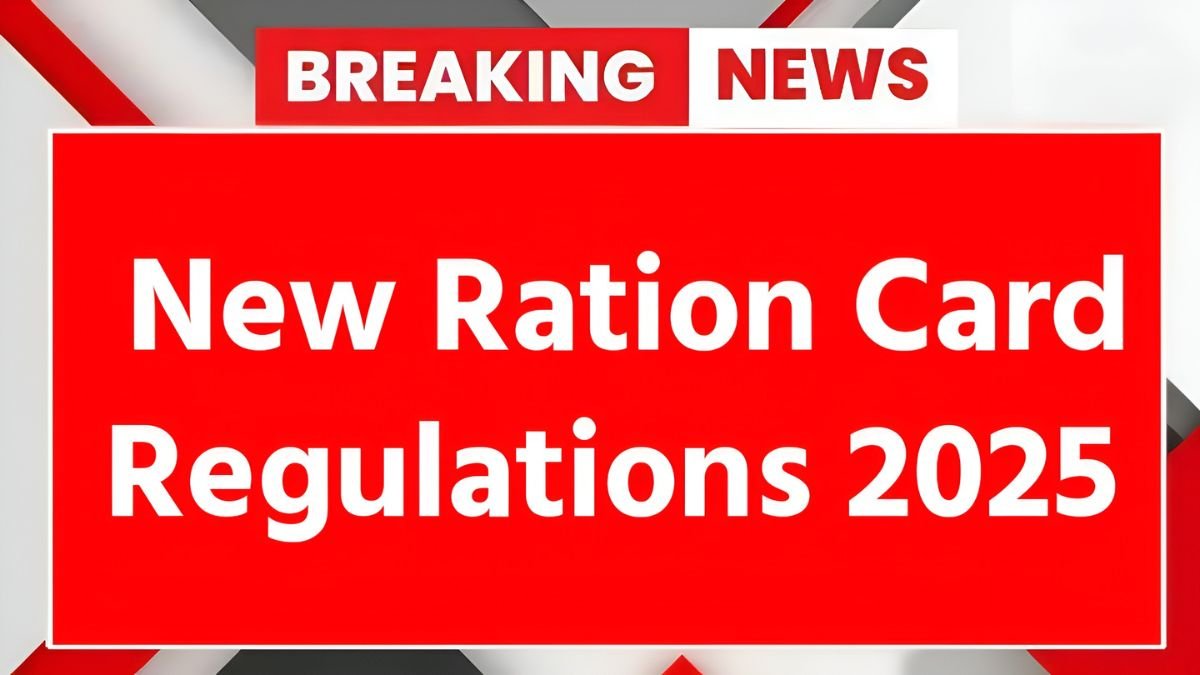The New Ration Card Regulations promulgated by the Government of India in 2025 ultimately concern the Public Distribution System (PDS) in terms of making it clearer, fairer, and faster. This rule, which has now been enforced throughout India in early 2025, aims for ensuring that subsidized food and benefits reach only those families that actually require them.
Key Reforms
The rules emphasized stronger checks based on Aadhaar, a reduced number of mistakes, and benefits entirely eliminated so that there would not be duplicate beneficiaries. Portability of benefits would, at the same time, be enhanced so that more migrant workers access benefits across states. Another important measure is the cash benefit at ₹1,000 for the eligible ration card holders, which adds the new direct financial support to the already existing food grains subsidies.
Eligibility and compliance
The rules apply to all ration card types: BPL, APL, Priority households, Antyodaya households, and new applicants. Each person under the ration card must link their Aadhaar with it to avail the food subsidies and ₹1000 assistance. States will do income and family verification during new applications and updates. Also, household-wise registration of births, deaths, and marriages along with any changes of address need post updating for a correct record.
Documents needed for Updates and New Cards
All required documents should be in Original and photocopy versions. Aadhaar cards for all members of the family, income certificate, proof of residence, current passport-sized photographs, and the old ration card (if any) must be in the applicants’ possession. For articles such as births or marriages, the concerned certificates should also be provided under this update. Based on the local regulations, states might ask for additional documents. However, the chances of rejection and delay can be minimized through matching details perfectly with the online form.
Benefits of rules in the year 2025
In times of soaring edible prices, the ₹1,000 monthly payment will come as a respite to stricken families. When combined with subsidized grains, this makes assistance ever more satisfying and secure. Speedy verification and digitized checks reduce the amount of paperwork involved and thus increase the speed of approvals. Real-time monitoring is also useful in tracing and quickly halting fraud.
Impact on Distribution and Portability
Aadhar-enabled biometric checks at fair price shops will reduce unauthorized withdrawals and ensure that rations reach the right person. Digital tracking can more accurately monitor stock and distribution. Improved portability under the One Nation One Ration Card System further eases disbursal across states without delays for migrant families.
This is what it implies for the migrant workforce
The new cash assistance would likely improve access to food rations for migrant workers across state lines. Digital verification is faster, as is portability, which lessens the associated uncertainty most migrant households grapple with currently. Such regional customization would still exist; central rules, however, would try to provide uniformity and simplicity across the country.
Moving ahead — tips for families:
Keep all of your important documents in order and link all members of your family to Aadhaar under these provisions. Refer to your state’s ration portal for specific instruction on the procedures and timeline within which you can complete your annual verification or apply for a new card.
For issues faced, visit the local fair price outlet or the ration office of the particular state and keep proof of both application and acknowledgment for future reference.
Conclusion
By revamping the new regulation on ration cards 2025, India will realize a food support system fair and secure while catering to the largest population in the most needy. Stronger digital checks combined with ₹1000 monthly benefit and better portability would save more vulnerable families and optimize the public resources used.
Note: This summary only serves as information. Always check for final instructions on the official government notification or on your state ration portal.
